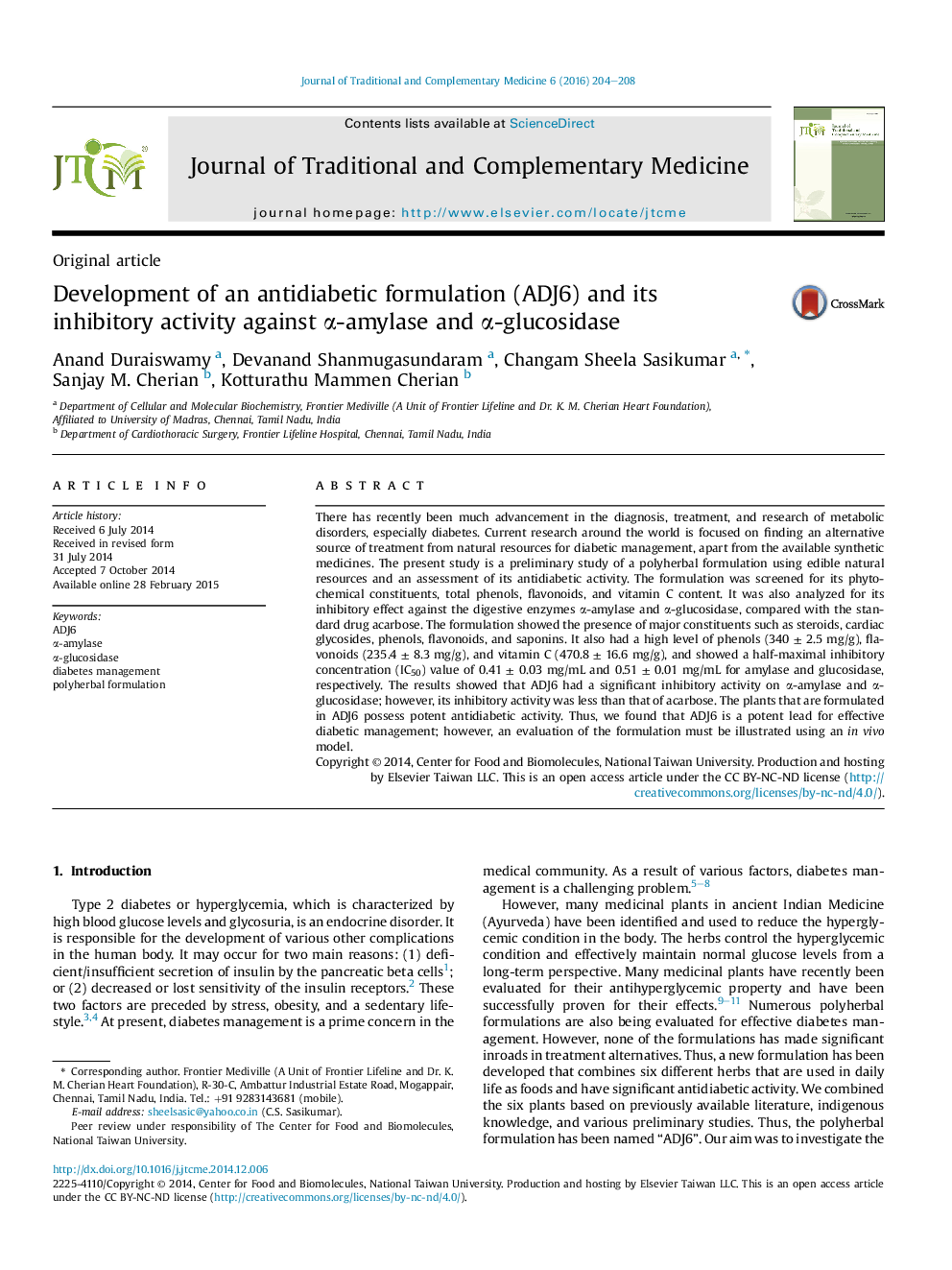| Article ID | Journal | Published Year | Pages | File Type |
|---|---|---|---|---|
| 3099668 | Journal of Traditional and Complementary Medicine | 2016 | 5 Pages |
There has recently been much advancement in the diagnosis, treatment, and research of metabolic disorders, especially diabetes. Current research around the world is focused on finding an alternative source of treatment from natural resources for diabetic management, apart from the available synthetic medicines. The present study is a preliminary study of a polyherbal formulation using edible natural resources and an assessment of its antidiabetic activity. The formulation was screened for its phytochemical constituents, total phenols, flavonoids, and vitamin C content. It was also analyzed for its inhibitory effect against the digestive enzymes α-amylase and α-glucosidase, compared with the standard drug acarbose. The formulation showed the presence of major constituents such as steroids, cardiac glycosides, phenols, flavonoids, and saponins. It also had a high level of phenols (340 ± 2.5 mg/g), flavonoids (235.4 ± 8.3 mg/g), and vitamin C (470.8 ± 16.6 mg/g), and showed a half-maximal inhibitory concentration (IC50) value of 0.41 ± 0.03 mg/mL and 0.51 ± 0.01 mg/mL for amylase and glucosidase, respectively. The results showed that ADJ6 had a significant inhibitory activity on α-amylase and α-glucosidase; however, its inhibitory activity was less than that of acarbose. The plants that are formulated in ADJ6 possess potent antidiabetic activity. Thus, we found that ADJ6 is a potent lead for effective diabetic management; however, an evaluation of the formulation must be illustrated using an in vivo model.
Graphical abstractFigure optionsDownload full-size imageDownload as PowerPoint slide
